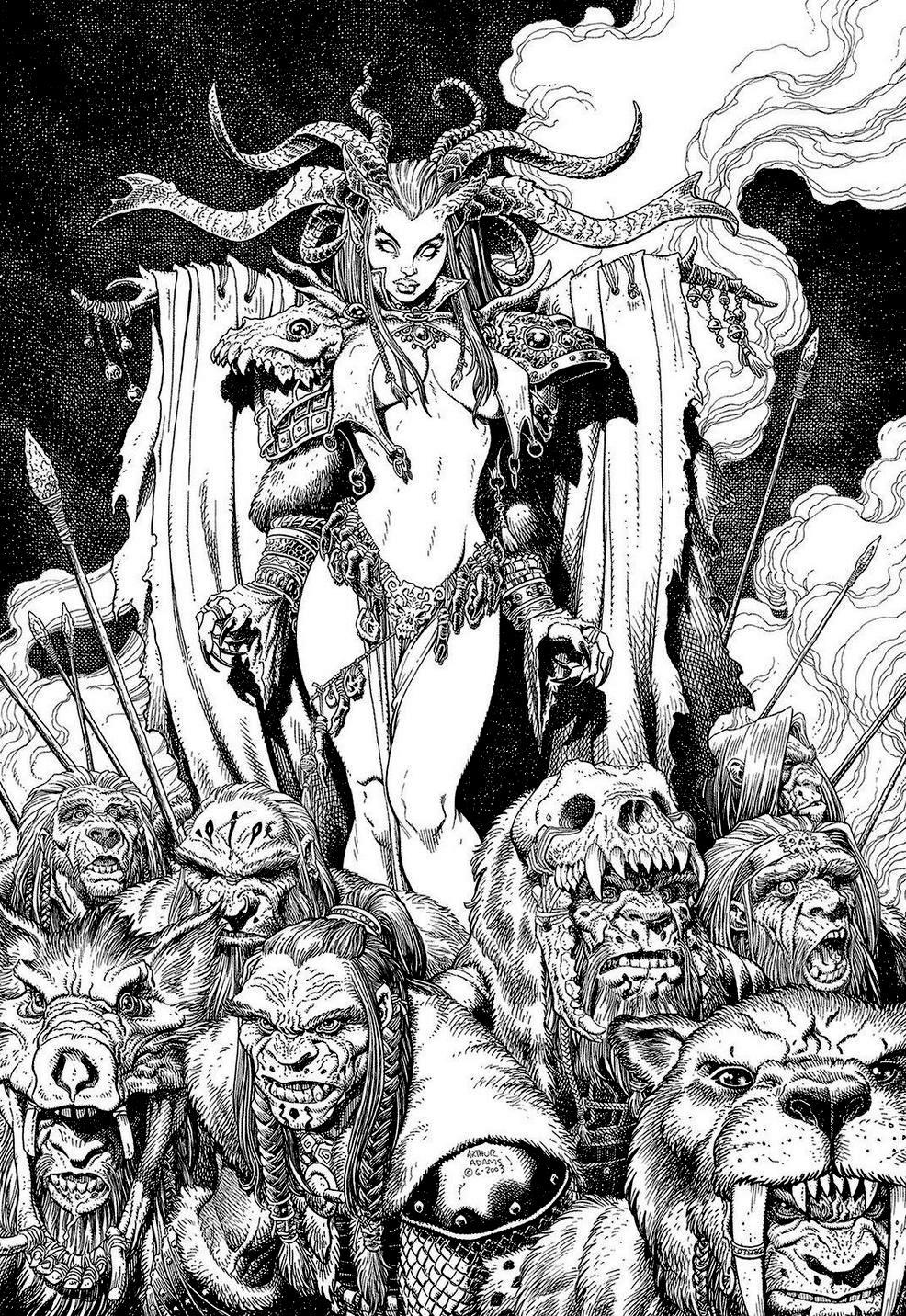Nephilim
"It happened after the sons of men had multiplied in those days, that daughters were born to them, elegant and beautiful. And when the angels, the sons of heaven, beheld them, they became enamoured of them, saying to each other, Come, let us select for ourselves wives from the progeny of men, and let us beget children."Enoch is of course not part of the recognized Biblical canon for most, but this passage really just expands on Genesis 6:4. Historical the term was glossed as "giants," so D&D goliaths would work, but that may be a too literal reading. They're demigods so half-Celestials? Tieflings? Keeping Tolkien in mind, the race that stood between supernatural beings and mundane men, were elves, so I think elves presiding over the pre-Flood world fits nicely. They can be taller than humans in true Tolkienian fashion, too.
- Book of Enoch, Book of the Watchers
This is not necessarily a new view. The internet tells me that the late thirteenth-century South English Legendary and some Icelandic folktales explain elves as angels that sided neither with Lucifer nor with God.
Children of Cain (Qéní)
Cain (Qayin) may be glossed "spear," but it is a cognate to a mid-1st millennium BC South Arabian word meaning "smith." Cain's descendant Tubal-cain is described in Genesis 4:22 as a "forger of all instruments of bronze and iron." Perhaps the Mark of Cain was the stature and coarse features of his dwarven descendants? Ray Winstone as Tubal-Cain in Noah has the beard, too:
Lilu
Lillith is now considered the first wife of Adam, but the term was originally glossed in Hebrew text translations as "night monster" or "night creatures" and appears in a list of animals in Isaiah 34:11. The term (likely the name of a demon) derives from the Akkadian lilitu which was the female version of the lilu demons. Perhaps the lilu creatures of the night are goblinoids with Lillith being the Goblin Queen?




Noah's Flood is canon not only for the Bible but for AD&D as well. From the Monster Manual's entry for the sahuagin:
ReplyDelete"The exact origin of the sahuagin is unknown. It is suggested that they were created from a nation of particularly evil humans by the most powerful of lawful evil gods in order to preserve them when the deluge came upon the earth."
Interesting! Thanks, Geoffrey.
ReplyDeleteYour translations are interesting: Nephilim = Elves, Cainites = Dwarves, Lillith(ians?) = Goblinoids. However, the end result is a fantasy setting with Humans, Elves, Dwarves, & Goblinoids. To me personally this feels rather generic, even if they are renamed and given different cultures. Perhaps a more interesting approach would be to use various biblical descriptions of non-human peoples as the inspiration for a unique group of fantasy races instead of simply mapping them to existing D&D races. It would be notably more effort to do this, but I believe you would have a more interesting setting if you did it instead.
ReplyDeleteTo each his own, of course. The idea of nonhumanoid races as PC types is pretty much a gamey one. I don't believe there to be any nonhuman "peoples" (in the Tolkien or rpg sense) in the Bible (unless one counts giants as nonhuman--but there're just giants, which are pretty generic). Taking a mythological creature and turning it into a PC race is the primary generifying process, in my opinion. Look what it did you the three your complaining about? By leaving it to elves, dwarves, etc. I keeping the damage from spreading. Likewise, I'm interested in seeing what mileage you can get out of a familiar concept just by putting it in a new context, hence I started by referencing Tolkien.
ReplyDelete